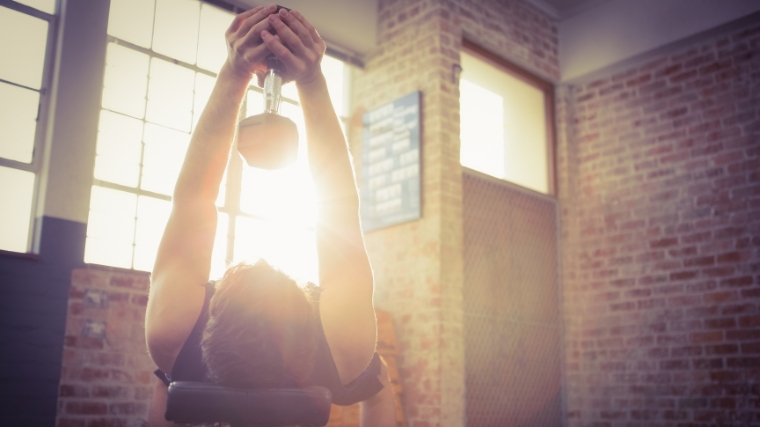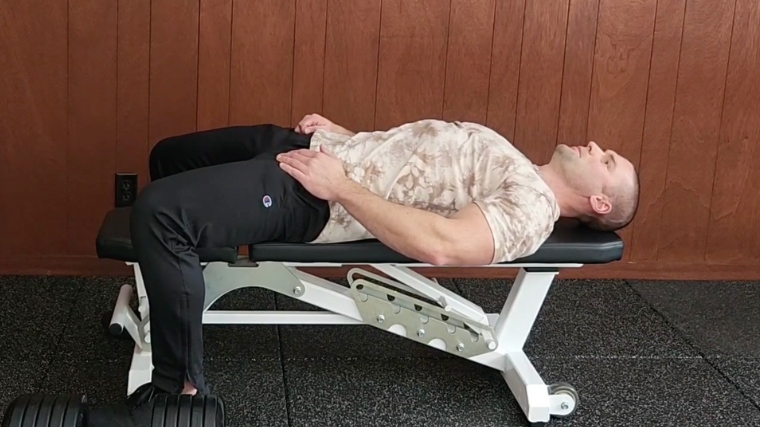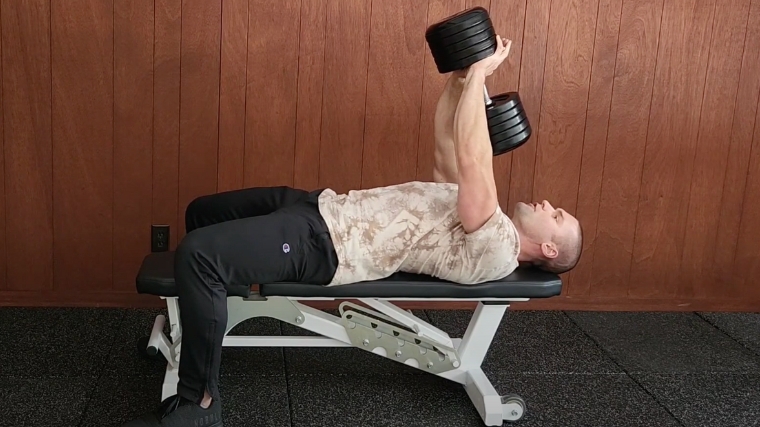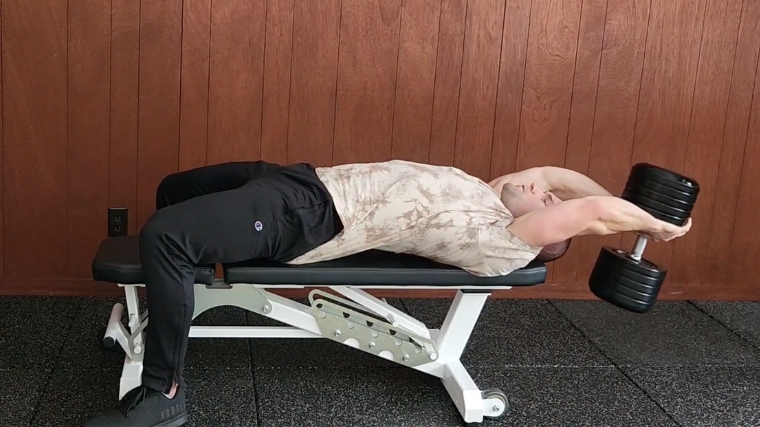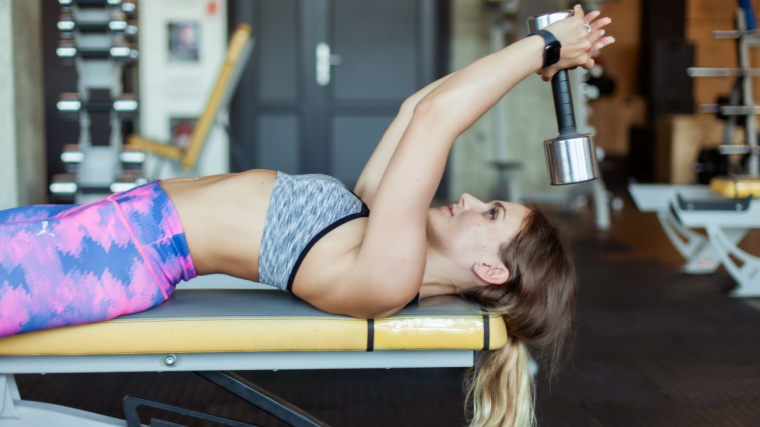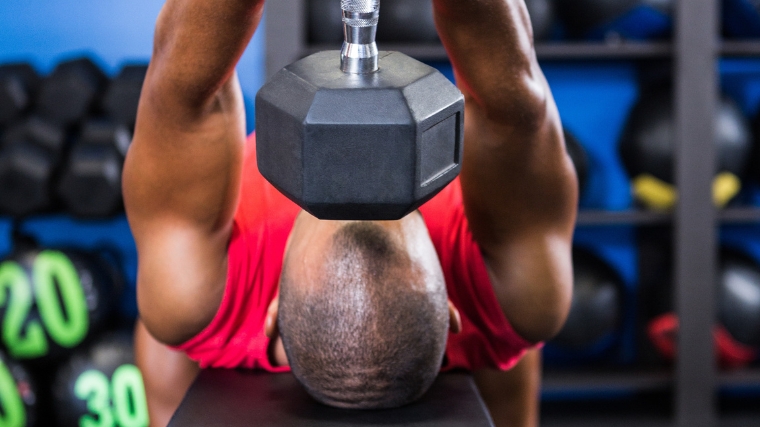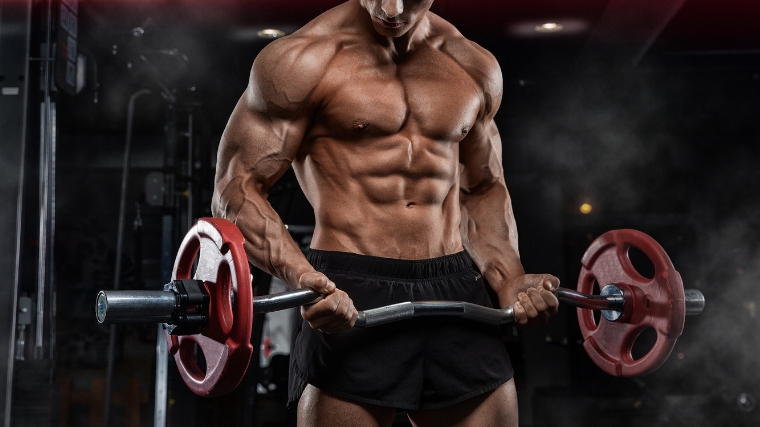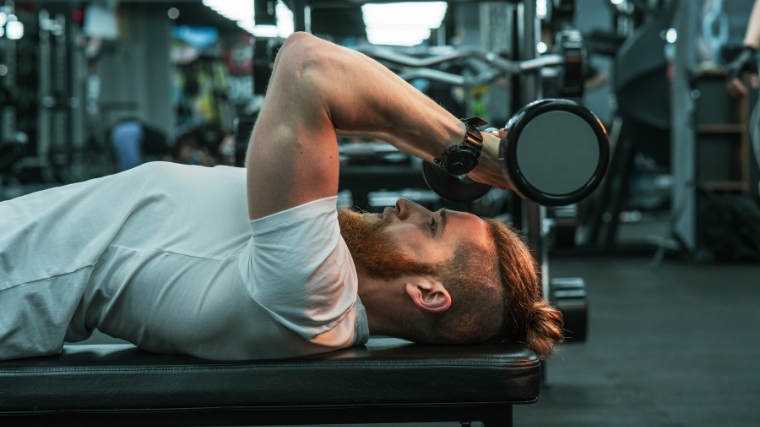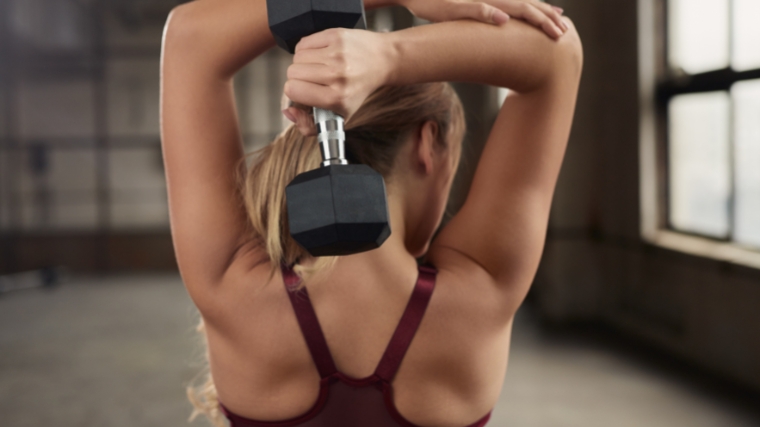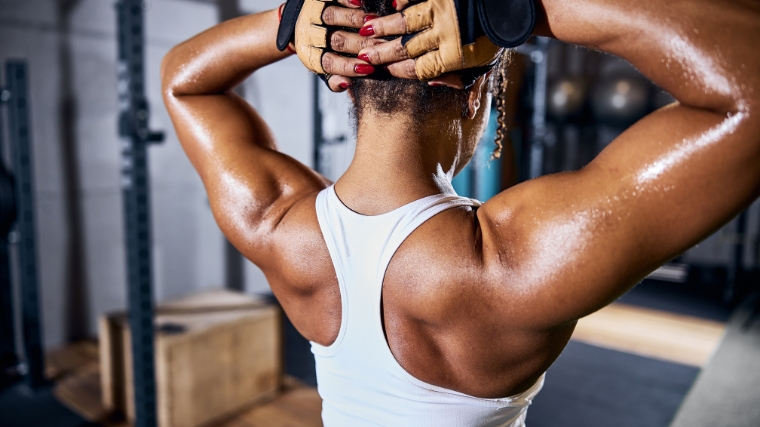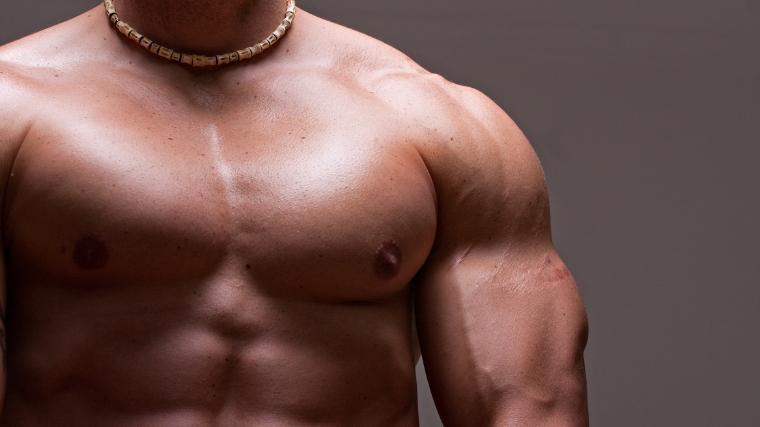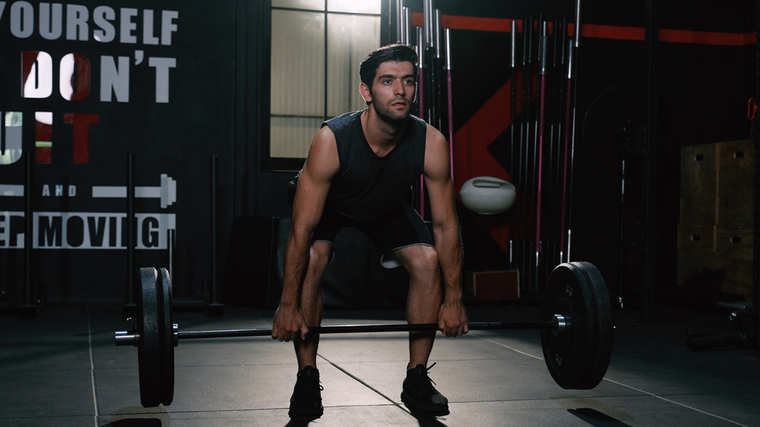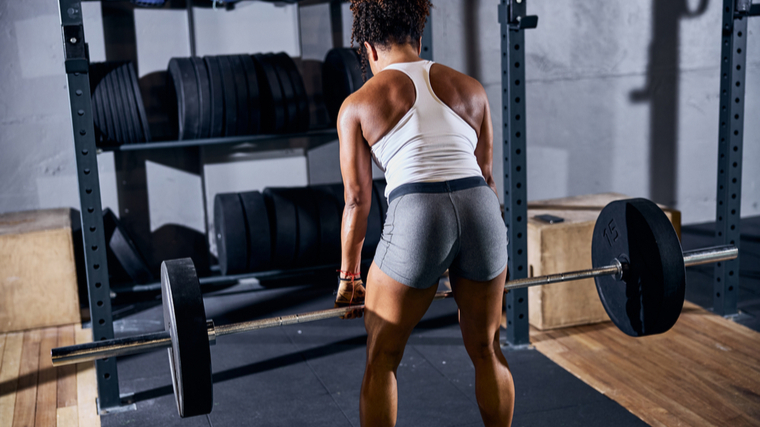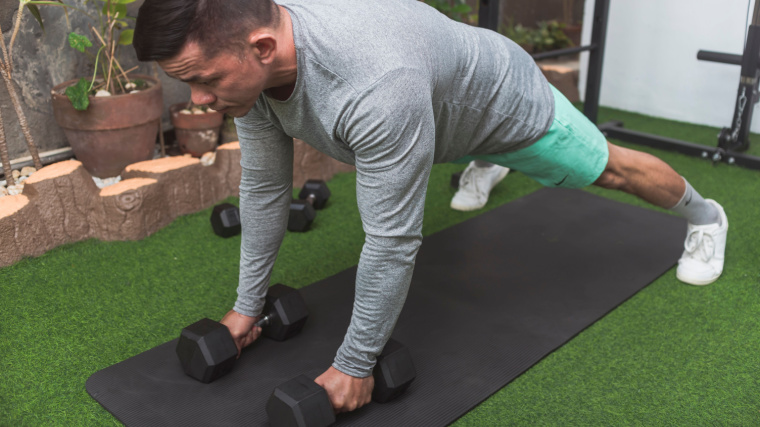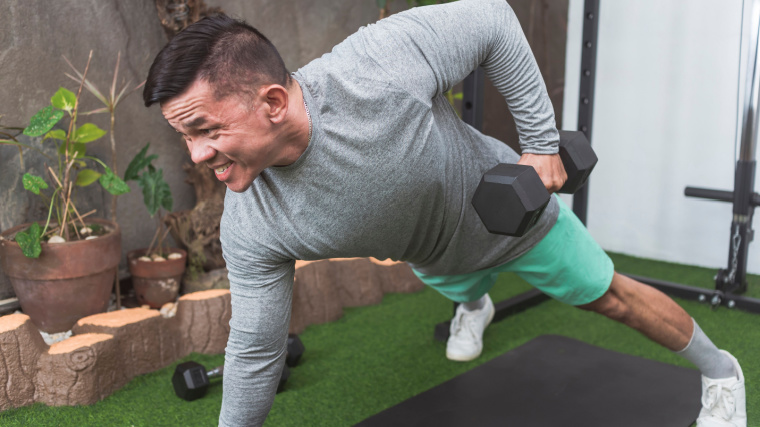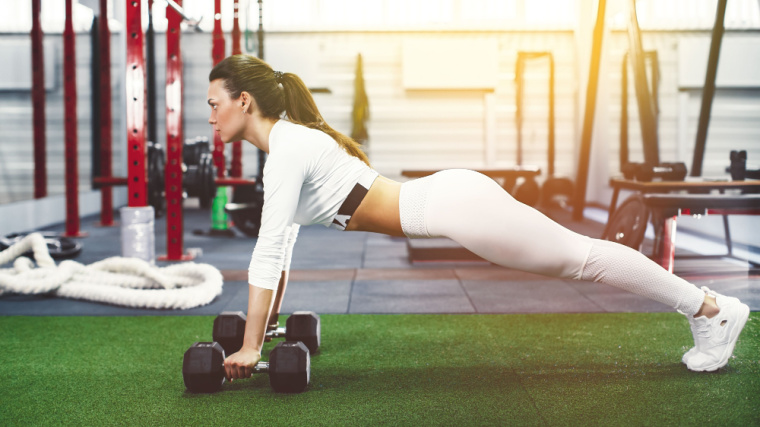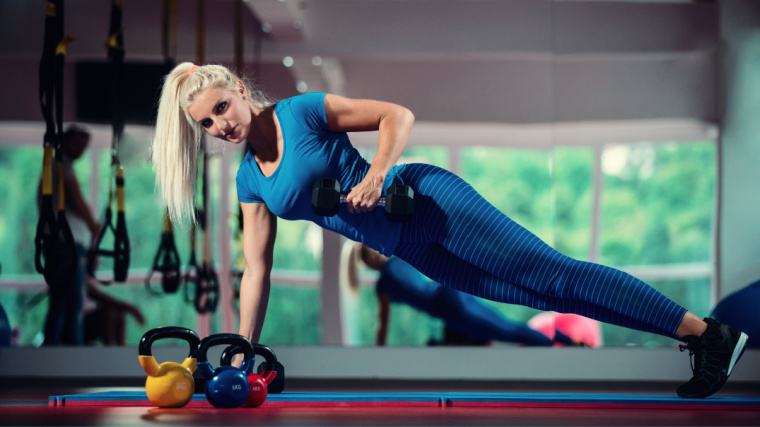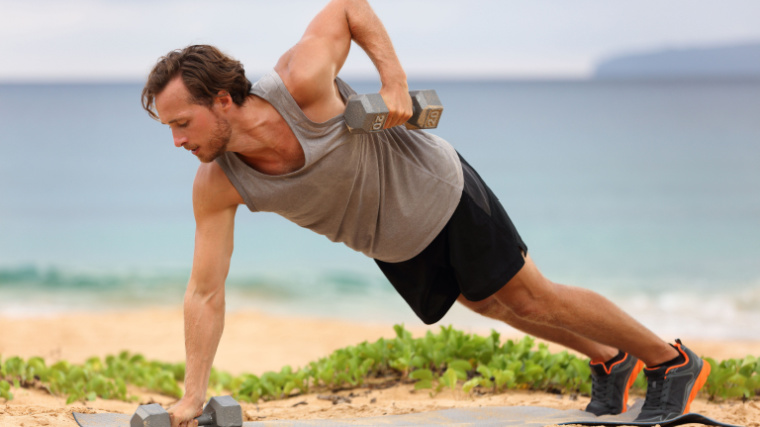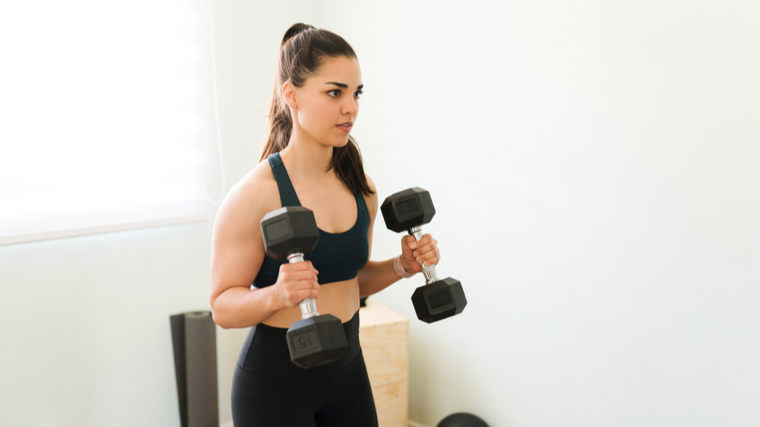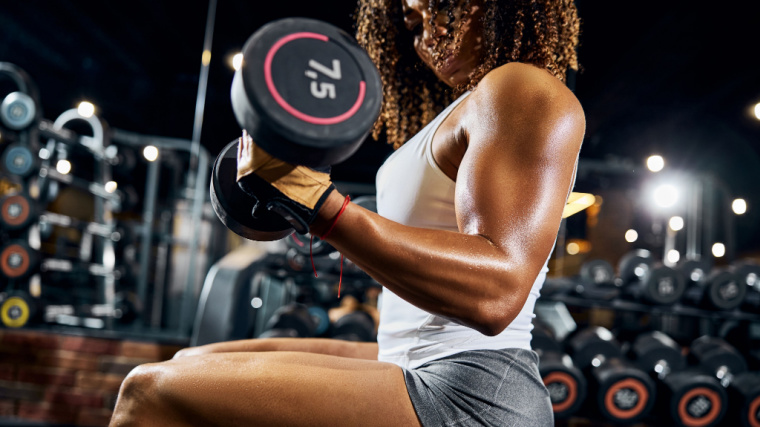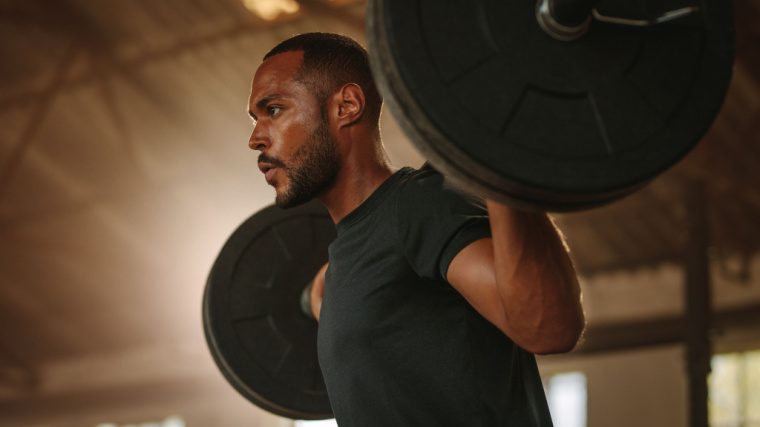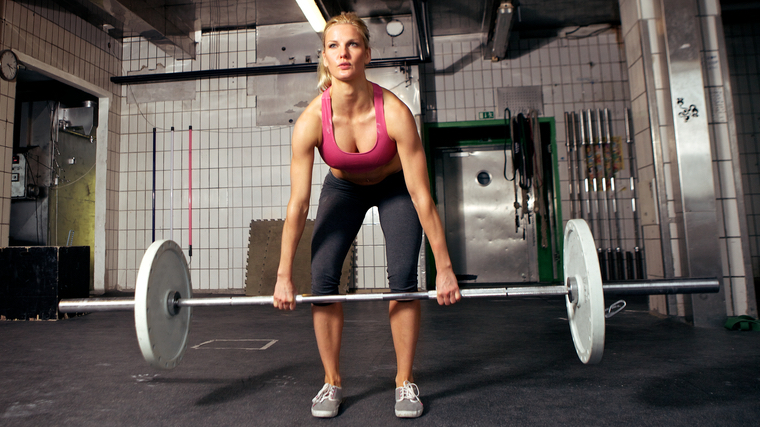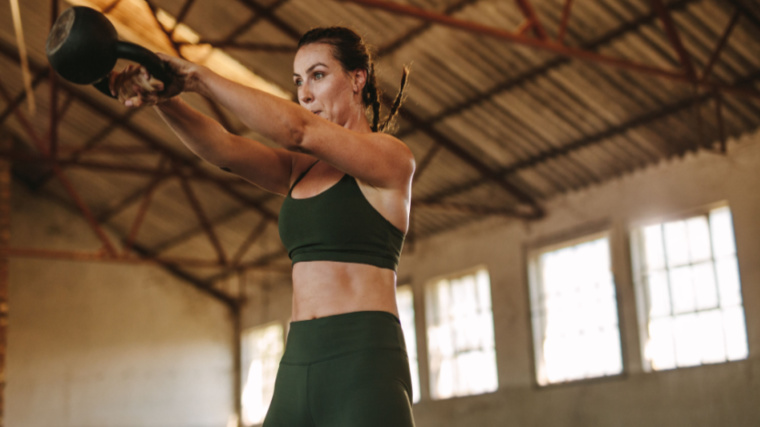Everyone talks about “International bench day,” but there’s nothing quite like pressing something heavy overhead. It’s pretty much the most innate display of strength. When little kids want to impress their parents with how strong they’re getting, they lift something overhead.
Most lifters should be able to press something relatively heavy overhead. If you can’t, it often means you’re missing the full use of your shoulders. Maybe you can’t move your shoulder through its full range of motion or maybe the stabilizing muscles of your shoulder blades and trunk can’t create stability to safely produce force.

The strict standing barbell press involves the shoulders, upper back, triceps, and even upper chest. It trains the entire body to create a stable base to push from, but it can be difficult to steadily improve and progress tends to stall much sooner relative to other barbell lifts. That’s why it’s important to know and use many different variations to help continue building muscle and strength. Here are eight overhead variations that will help you impress mom, again.
Best Overhead Press Variations
Landmine Press
Sometimes, pushing weight directly overhead can cause more harm than good. It may be because of an injury or just a lack of flexibility in the shoulder, triceps, lats, or wrists. The landmine press is unique because the pattern of movement is between a straight vertical and horizontal path.
This hybrid type of motion gives many of the benefits of direct overhead pressing while reducing the joint angle that may be putting a dangerous demand on your shoulder.
When to Use It
The landmine press is great to use when recovering from injury and building back strength and function from time off training. It allows you to still develop strength and muscle while you work to restore full function of the shoulders to press directly overhead.
It’s also a good variation to use when doing an intense phase of bench press training, as it won’t fatigue your shoulders excessively or affect recovery quite like straight overhead barbell pressing.
How to Do it
If you don’t have a landmine holder, you can wedge a regular barbell in any corner where it won’t cause damage. Load the bar and pick it up by the head (the end of the sleeve where you load the plates).
The landmine press can be performed with just one arm or both together. If you’re using two arms, cup the end of the barbell sleeve with both of your hands. Place the head of the bar near your sternum with your torso leaning slightly forward. Set your feet between hip and shoulder-width apart. Keep your elbows close and pulled in as you press. As your elbows lock with the bar almost at the crown of your head, shrug your shoulders up before returning the bar back to the starting position.
If you’re using the one-arm variation, grab the end of the sleeve with one hand and place the bar at the front of your shoulder. Stand and press the same way, driving the bar forward and up to lockout, followed by a shoulder shrug. Make sure you keep your elbow in, so the bar stays in line with your shoulder throughout the entire movement. Flaring your elbow will alter the pressing angle, reduce power, and shift stress to the joint.
Landmine Push Press
The push press is a great way to increase overhead stability with weights you couldn’t otherwise strict press. You use your legs to help to drive the weight up in a push press, allowing you to use heavier weights.
But a standard barbell push press can be difficult to learn and to do efficiently. The landmine push press is easier for people to grasp because of both the path you drive the bar and the position of your shoulders relative to the bar.
When to Use It
The landmine push press is a great exercise to add whenever your pressing progress slows or hits a plateau. The exercise can be included on either bench or overhead press days as a way to overload the pressing muscles with more volume while still moving relatively big weights.
How to Do it
Just like the landmine strict press, if you don’t have a holder you can wedge the bar in a corner and load it the same way. Because using heavier weights is a specific benefit of the landmine push press, it’s best performed with both hands on the bar. Cup your hands and place the head of the bar almost directly on your sternum. Set your feet between hip and shoulder-width apart and flare your toes out very slightly.
Brace your core and dip your knees as if you were preparing to jump as high as possible. Drive your feet into the ground and explosively extend your knees and hips as if you were trying to jump. Your heels will lift from the floor from this aggressive ankle extension, but keep the balls of your feet in contact with the ground — don’t actually jump into the air.
As your ankles extend, shrug your shoulders toward the bar. Try to make the bar fly off your chest from your leg drive and shoulder shrug. Then, push with your arms to extend your elbows. Let your heels touch back to the floor right as your elbows extend with the bar over the crown of your head. Control the bar as you bend your arms and absorb the momentum with your legs and trunk as you lower it.
Bottoms-Up Press
This is one of the best, but most challenging, pressing exercises for shoulder and scapular function and stability. It’s often used as a rehab or “prehab” drill because it engages most of the postural muscles like those of the rotator cuff that stabilize and move the shoulder blade.
Balancing the bell upside down trains you to find the most stable path of motion and forces you to control the movement. Sometimes, the dominant muscles responsible for pressing overhead are restricted by how well your shoulders are stabilized. Improve those muscles and you can improve how much force you can create.
When to Use It
These are great to do on deload weeks or at the very beginning of a new phase of training. You can think of them as a developmental exercise to prepare the shoulders for heavier, more intense training ahead.
How to Do it
The bottoms-up press can be done standing or sitting, but a half-kneeling position actually puts you in a great mechanical position to do the exercise. Kneel down with the kettlebell in one hand and that side leg kneeling on the ground, with the opposite leg forward. Squeeze the handle and turn the weight upside down so the bottom of the bell is facing the ceiling. Crush your grip to maintain the weight in this vertical position.
Move your elbow toward your center so your thumb is in front of your face and your elbow is at a right angle with the floor. Slowly extend your elbow up to the ceiling and move your upper arm slightly back to put it in line (or covering) your ear as you lock out overhead. Stabilize the weight overhead briefly before slowly returning back down to your face.
Kettlebell Z Press
The Z press is an excellent choice for increasing the tension and demand on your shoulders and upper back without necessarily increasing the load used. Often you’ll see a lifter arch their spine or lean back during a standing overhead press because they lack the postural control and trunk or upper back strength needed to keep their spine neutral while pressing.
Sitting upright on the floor with no possible leg drive or back support helps you feel any change in your spinal position, so you can focus on preventing the problem. Pressing from the floor with the offset weight of kettlebells challenges your trunk and shoulder stabilizers in a way other exercises can’t.
When to Use It
Use the kettlebell Z press at the beginning of a workout to warm up your entire shoulder complex. One or two sets with light to moderate weight is enough to get your shoulders moving freely without causing fatigue that could affect your main training.
Adding it to the end of a hard pressing workout is also a great way to add more volume, because you don’t need to use much weight or too many reps for the movement to be effective.
How to Do it
Sit on the floor with your legs straight while keeping an upright torso. Hold a pair of kettlebells with your palms facing each other at shoulder-level. Exhale hard through your mouth trying to force the air out of your torso to make it as narrow as possible. You should feel your ribcage drop down and the muscles in the front and sides of your torso, around your core, contracting.
Keep these muscles engaged to prevent your back from arching or your ribs flaring up as you press overhead. Keep your upper arms in line with your ears and rotate your hands palms-forward as you lock your elbows. Shrug your shoulders as your elbows lock before returning to the starting position.
Earthquake Bar Overhead Press
The earthquake bar is a bridge between training stability and increasing pressing power. The bar is designed to shake and swing, which engages the deepest and smallest shoulder stabilizers. Because it’s one straight bar, you can use relatively heavier weights than you could with dumbbells or kettlebells.
If you don’t have access to an earthquake bar, hanging resistance bands from the ends of both sleeves of a standard barbell and attaching weight plates is an effective alternative.
When to Use It
You can think of this like a secondary lift which can be done right after a heavy overhead barbell press or bench press. Though you will use much less weight, you can use a similar weekly progression of set and reps that you’d use for your main pressing lift. The instability will be the key challenging element to this exercise.
How to Do it
Set the bar on a rack just as you’d do for a standing overhead press. Start with relatively light weight and gradually slowly add more as you feel comfortable and learn to control the movement. Grab the bar with your thumbs just outside your shoulders. Angle your elbows just slightly in front of the bar. Shrug your shoulders forward and up to create a support for the bar, whether you have the mobility to rest the bar on top of your shoulders or not.
Step back from the rack and set your feet hip-width apart with your knees just slightly unlocked. Wait until the initial swinging stops and pull your chin back (think of giving yourself a “double-chin”). Press the weight up slowly, keeping the bar as close to your face as possible.
Once the bar passes the crown of your head, very slightly push your head and sternum forward so your elbows lock overhead as the bar is directly over the base of your neck. Shrug your shoulders upward and stabilize the bar at the top. Lower the weight by pulling your chin back and returning the bar to the starting position.
Snatch-Grip Behind-the-Neck Press
Usually you’d only see Olympic weightlifters use this as an accessory exercise, but it can be very beneficial to anyone looking to improve overhead strength or build their upper back and traps.
The ultra-wide grip challenges your rear delts and upper back in a very unique way. If you start with relatively light weight and progress slowly, the snatch-grip behind-the-neck press can actually improve your shoulders’ working range of motion and strengthen the muscles and connective tissue that support good shoulder function.
When to Use It
These can be pretty difficult, so instead of adding them as an accessory exercise after heavy standard overhead pressing, take a few weeks to prioritize the exercise by progressively working heavier instead of performing the standard barbell overhead press. Do them as the first main lift on a pressing or upper-body focused day.
How to Do it
Place a bar on a rack at your back squat-height (roughly upper-chest level). Walk under the bar and place it on your back as if you would for a high bar squat. Unrack the weight and step back. Slide both hands out until your index fingers are generally outside of the knurl marks on the barbell (smooth rings).
Angle your elbows directly under the bar, keep your neck straight, and brace your trunk while keeping your ribs from flaring up. Press the bar while keeping it in line with the base of your neck until your elbows lockout overhead. Don’t let the bar sway forward or behind your neckline. Shrug your shoulders at the top before returning the bar all the way back to the top of your traps.
Swiss Bar Overhead Press
The Swiss bar is one of the best tools to use if you’ve had any shoulder or elbow pain, or pre-existing injuries. Its key benefit is multiple handles that let you place your hands close or wide while keeping a neutral-grip (palms facing each other) position.
This neutral position gives even those rotator cuff dysfunction a way to press without causing more strain in problematic areas in the shoulder or upper back.
When to Use It
The Swiss bar press is great to do when your shoulders, elbows, or wrists get cranky from other types of pressing. You can use the exercise in place of other overhead pressing options until you fully rehab an injury or recover from whatever nagging pain is causing issues.
How to Do it
Decide which grip-width feels most comfortable use and set the bar on a rack, the same you would for any overhead barbell press. Grab the handles and rotate the bar so your thumbs face toward your head. Unrack the weight and step back to your standard press foot position, roughly hip-width apart. Start with the bar about chin height.
Pull your neck in, as if you were giving yourself a double-chin, and keep the bar close to your face as you press overhead. Push your head slightly forward as you lock your elbows overhead. Shrug at the top as your elbows lock before lowering to the starting position.
Overhead Pin Press
Part of the reason overhead pressing can be so hard to improve is because you push from a static position, particularly on the first rep. In many other lifts, like the bench press, you have the eccentric (lowering portion) of the lift which helps store force that you use to press the weight back up.
Because you don’t lower the bar first in an overhead press, you have to be able to muster a large amount of force suddenly without momentum. This is called “starting strength” and a pin press is one of the most effective ways to specifically train this quality.
When to Use It
If you can’t create a stiff and stable base of tension, you can’t suddenly create this force. And if you’re shifting your torso back and forth as you press, you definitely don’t have a good base of support.
Consider swapping all barbell overhead pressing for pin pressing until you improve this stability. Because the bar is supported on the safeties, you can better focus on setting your trunk and keeping it stiff and fixed in place as you push hard against the bar to lift it from the starting position.
How to Do it
Set the bar on strong safety bars at the height you would start your press from, generally around neck-height. Set your feet hip- to shoulder-width apart and grab the barbell with your standard overhead grip. Get in position under the bar and brace your entire trunk and back so your ribs won’t flare up and your spine is locked in place.
Keep this static position as you press as hard and fast as possible, brining the bar to lockout overhead. Return back to the pins and let the weight settle there before re-bracing and repeating for another repetition.
Muscles Worked by the Overhead Press
The overhead press is primarily a “shoulder exercise,” but it cannot be completed without assistance from several key body parts. Each of these body parts will be put under training stress during the exercise.
Shoulders
Your shoulders (deltoids or “delts”) are the primary movers during the overhead press. These muscles are responsible for flexing your arms overhead. The shoulder muscles consist of three heads — the front, side, and rear — which are involved in moving the arm in those respective planes of motion relative to your body.
All three muscle heads are used to press the weight overhead, but can be emphasized with various types of lateral raises.
Triceps
The triceps work to extend your arms, which is the latter portion of any shoulder press. The lockout portion of any overhead press, specifically, strongly activates your triceps. (1) The triceps are worked through a long range of motion during any overhead press variation, with the muscle recruited maximally in the top half of the movement.
Core
Your abs and lower back work together to form a strong, stabilizing core which supports overhead pressing. Any degree of sideways or backward lean is prevented through strong core stabilization. (2) It’s not unusual to feel sore abs after an intense overhead pressing session, which is one indicator of how significantly the core muscles work during the movement.
Overhead Press Form Tips
A few key technique cues can turn your basic overhead press from pain into progress. If you’re performing the lift from a power rack, set the safeties near shoulder or neck-level, not near your chest. Beginning the press from a position that’s too low leaves you with poor leverage that shifts more strain to the shoulder joint than the shoulder musculature.
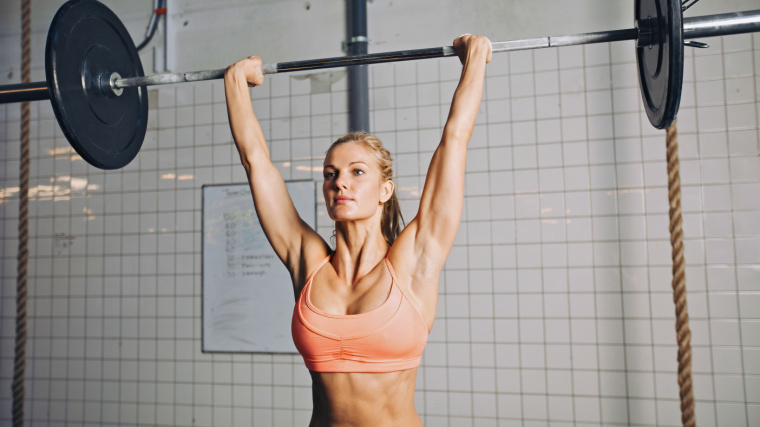
During any press exercise, grip the bar as hard as possible. This will start a chain reaction of strength from your wrist and forearm muscles, through your upper arms, into your shoulders and upper back. (3) It’s a surprisingly effective way to stay tight while producing more power and minimizing joint strain.
Similarly, don’t stand up “passively.” Before each repetition, flex your core, glutes, legs, and calves. Imagine gripping the ground with your feet. This will help to establish total-body stability to drive a strong upward press.
Press More Over Your Head
Bench press variations are fairly commonplace. Without giving it much thought, lifters tend to do much more horizontal pressing than vertical, but too much horizontal work and not enough vertical pressing can lead you to develop deficiencies in the muscular development and control of the entire shoulder girdle.
Learning and trying new overhead variations not only increases the potential weights you can use for your barbell overhead press, but also reduces the gap between these two pressing patterns making you much stronger and more balanced. Diversify your overhead training and reap the strength, stability, and muscle-building results.
References
- Kholinne, E., Zulkarnain, R. F., Sun, Y. C., Lim, S., Chun, J. M., & Jeon, I. H. (2018). The different role of each head of the triceps brachii muscle in elbow extension. Acta orthopaedica et traumatologica turcica, 52(3), 201–205. https://doi.org/10.1016/j.aott.2018.02.005
- Shinkle, J., Nesser, T. W., Demchak, T. J., & McMannus, D. M. (2012). Effect of core strength on the measure of power in the extremities. Journal of strength and conditioning research, 26(2), 373–380. https://doi.org/10.1519/JSC.0b013e31822600e5
- Gontijo, L. B., Pereira, P. D., Neves, C. D., Santos, A. P., Machado, D.deC., & Bastos, V. H. (2012). Evaluation of strength and irradiated movement pattern resulting from trunk motions of the proprioceptive neuromuscular facilitation. Rehabilitation research and practice, 2012, 281937. https://doi.org/10.1155/2012/281937
Featured Image: MDV Edwards / Shutterstock
